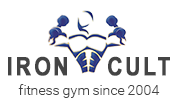The Gymnastic Ring
By vishwa on Training
March 15, 2017
Well, I love this piece of equipment. It is friendly on the shoulders; whether I perform, muscle ups, dips, front lever, etc. Whereas, when I dip or muscle up on the parallel bars that stiffens my shoulder girdle. Mostly, because the emphasis is more on the shoulders alone and due to my previous injuries to the shoulders.
The Olympic ring is a very versatile training modality. However, many of my gym clients typically wince from it. Understandably because it is tough to maneuver it, but, on a positive note, the very unstable nature of the ring results in stable shoulders. Moreover, from a bio-mechanical perspective, Scott Iardella answers why the shoulders feel healthy on rings, in his book titled Edge Of Strength. He says, “One of the key benefit of the holds or dips is the muscle activation of the rotator cuff. The rotator cuff consists of 4 muscles in your shoulder joint that hold the ball (the humeral head) in the socket (the glenoid).”
“The static holds and dynamic movement with rings get the rotator cuff, lattismus dorsi, scapular stabilizers, and everything else in the shoulder girdle to fire at a high level.” Amazingly so! You don’t believe me, never mind. Perform ring dips for a few weeks and let me know how great you feel in maintaining the shoulder mobility, flexibility and strength.
Some of the movements you can execute using a gymnastic ring is dips, push-ups, muscle ups, roll outs, body-weight extension, etc. As I stated earlier, most of the above movements are shoulder friendly. Moreover, the upper body strength you derive from operating the rings is unparalleled.
On a similar, personal, note, I know that 18 years of constantly lifting weights has taken a huge toll on my joints. However, as soon as I introduced the gymnastic ring (perhaps 7 years or so) in the gym my shoulders have never been so healthy. I have had several injuries on both shoulders during my initial years of weight training. Thanks to bodybuilding routines which are machine based. Machine based routines ruin the health of the joints, as they cause repetitive pattern overload. What is repetitive pattern overload? Pattern overload describes injury to soft tissues resulting from repetitive motion in one pattern of movement, or restricted movement in one or more planes of motion. Pattern overload is much more common in an environment such as machine training, which restricts freedom of motion, but never so on the rings. Rings, on the other hand, are versatile, and, as stated earlier, fires the entire shoulder girdle leading to activation of all the adjacent muscles; thereby, leading to no imbalance. However, on the flipside, machine training can cause major imbalances of the muscles, as the movements are two dimensional. On the other hand, free weights such as dumbbells, barbells, sand bags and rings allow you to move in a three dimensional space.
Several such injuries to the soft tissue are chronic leading to painful movement, lack of mobility and strength, and injuries to my shoulder lead to the above mentioned issues. But the rings have definitely saved me. By far, I believe one of the most resourceful decision I have ever made in the gym is to introduce the Olympic ring. I again execute dips on the parallel bar, for my shoulders can easily take the brunt. One of the primary reason is the ring which has helped maintain my shoulder mobility and stability.
Below, you can see me performing muscle ups and front lever. I believe you cannot execute these movements if your shoulders aren’t healthy.
